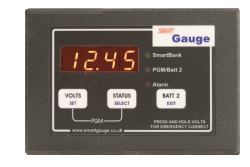Hi folks.
I have a camper van that I'm building. It has 390 watt PV on the roof. An MPPT controller and a battery bank of 320ah.
I am connecting up a split charge relay for charging this battery bank from the vehicles alternator when driving. It's positioned under the passenger bench seat in the cab close to the engine. It's a 2.9 Turbo Diesel Mercedes Sprinter 2003 and I believe the alternator to be rated at 90amps
The way I'm doing this is connecting a 100amp relay into a heavy duty cable between the positive terminal of the leisure battery bank and the positive terminal of the vehicles battery, a run of about about six foot. Both batteries are earthed to the vehicle chassis negative. This cable will be fused at either end with 150amp mega fuses. The relay is then triggered from a thin wire that was directly coming from the alternator. This only goes live when the alternator is running, not when just the ignition is switched on.
My concerns/ questions are:
1) If the leisure battery bank charge is very low (although I intend to avoid this anyway.) The system will potentially result in a very high current when the engine starts. Do I need to limit this or will it be OK? (Possibility: I am going to be installing a shunt on the negative earth strap of the leisure battery bank for an ammeter, will this limit the current to it's rating? (Say a 100amp shunt.))
2) Will the alternator be OK if I don't limit the charge rate?
2) Would the split charge cable be better off connected directly to the alternator instead of the vehicle battery positive terminal?
Additionally:
I intend to fit a momentary sprung push switch that you have to hold down. This will trigger the relay to allow a reverse flow to the vehicle battery if it is ever flat. Basically an emergency override to essentially jump start the camper. I'd hold the button down for about thirty seconds, preferably with a sun full of PV and then attempt to start the engine. I understand that this is not good for my leisure batteries but it would be in an emergency.
Does anyone have any comments on this?
Thanks.
I have a camper van that I'm building. It has 390 watt PV on the roof. An MPPT controller and a battery bank of 320ah.
I am connecting up a split charge relay for charging this battery bank from the vehicles alternator when driving. It's positioned under the passenger bench seat in the cab close to the engine. It's a 2.9 Turbo Diesel Mercedes Sprinter 2003 and I believe the alternator to be rated at 90amps
The way I'm doing this is connecting a 100amp relay into a heavy duty cable between the positive terminal of the leisure battery bank and the positive terminal of the vehicles battery, a run of about about six foot. Both batteries are earthed to the vehicle chassis negative. This cable will be fused at either end with 150amp mega fuses. The relay is then triggered from a thin wire that was directly coming from the alternator. This only goes live when the alternator is running, not when just the ignition is switched on.
My concerns/ questions are:
1) If the leisure battery bank charge is very low (although I intend to avoid this anyway.) The system will potentially result in a very high current when the engine starts. Do I need to limit this or will it be OK? (Possibility: I am going to be installing a shunt on the negative earth strap of the leisure battery bank for an ammeter, will this limit the current to it's rating? (Say a 100amp shunt.))
2) Will the alternator be OK if I don't limit the charge rate?
2) Would the split charge cable be better off connected directly to the alternator instead of the vehicle battery positive terminal?
Additionally:
I intend to fit a momentary sprung push switch that you have to hold down. This will trigger the relay to allow a reverse flow to the vehicle battery if it is ever flat. Basically an emergency override to essentially jump start the camper. I'd hold the button down for about thirty seconds, preferably with a sun full of PV and then attempt to start the engine. I understand that this is not good for my leisure batteries but it would be in an emergency.
Does anyone have any comments on this?
Thanks.


Comment